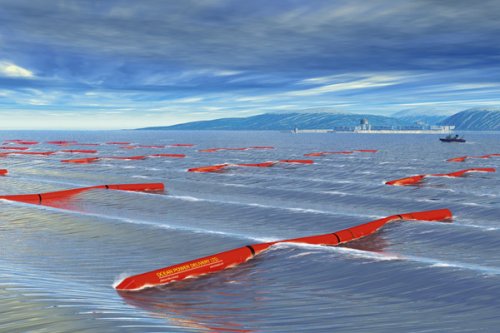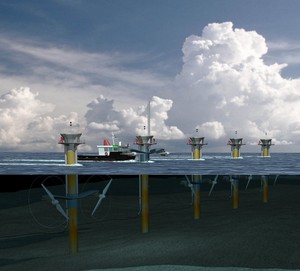Renewable Ocean Energy
Ocean renewable energy is a term used to describe all forms of renewable energy (energy sources that can be naturally replenished in a relatively short period of time) that are derived from the marine environment. These forms include wave energy, tidal energy, ocean and river current energy, offshore wind energy, salinity gradient energy, and ocean thermal gradient energy.
The U.S. Energy Information Administration estimates that renewable energy will account for over 12% of U.S. electricity production by 2030, with non-hydro renewable generating sectors the fastest growing sources.
 |
Pelamis Wave Farm
Source: Pelamis Wave Power |
A portion of this growth will undoubtedly occur in the marine environment, both to exploit the enormous power available from the oceans, as well as to try to avoid the conflicts and socioeconomic costs associated with terrestrial development. In recognition of the future importance of renewable energy, 29 states plus the District of Columbia have adopted Renewable Portfolio Standards, which require a percentage of energy sales or installed capacity to come from renewable sources. These standards stem from heightened awareness of the effects that climate change will have on our society and environment, and from rising oil and natural gas prices. Consequently, increasing emphasis is being placed on clean alternative renewable energy technologies designed to harness the power of waves, tides, ocean and river currents, and offshore wind.
 |
SeaGen System
Source: MCT Limited |
NMFS will play an important role in the siting and environmentally-sound operation of these renewable ocean energy projects to ensure the long-term sustainability of living marine resources and associated habitats.